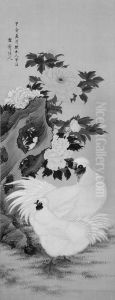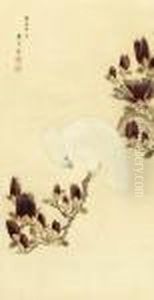Masuyama Sessai Paintings
Masuyama Sessai was a Japanese painter and scholar of the Edo period. Born in 1755 in Japan, Sessai was recognized for his contributions to the bunjinga or literati painting genre, which emphasized the scholarly and poetic aspects of painting rather than purely aesthetic qualities. This style was heavily influenced by the Chinese literati painting tradition, which prized the personal expression of the artist and often included calligraphy and poetry directly in the artwork.
Sessai was not only a painter but also well-versed in Chinese literature and Confucian classics, which greatly influenced his work. His paintings often displayed a combination of Chinese themes with Japanese sensibility, and he was known for his delicate brushwork and use of ink wash. Sessai's landscapes and figures are characterized by their elegant simplicity and quiet, contemplative nature.
Throughout his career, Sessai was involved with the intellectual circles of his time, and his art was a reflection of his scholarly pursuits. He was part of a broader movement of Japanese literati who sought to express their personal intellect and artistic skill through their work, distancing themselves from the more formal and decorative approaches favored by the schools of art associated with the Japanese court and shogunate.
Masuyama Sessai passed away in 1806, leaving behind a legacy that would influence Japanese painting traditions. His works continued to be appreciated for their intellectual depth and contribution to the bunjinga style, which remained popular among educated circles in Japan. Sessai's art is a testament to the cultural exchange between Japan and China and the enduring appeal of literati ideals in the world of art.

